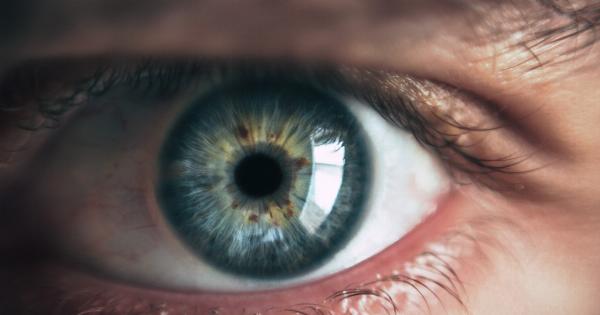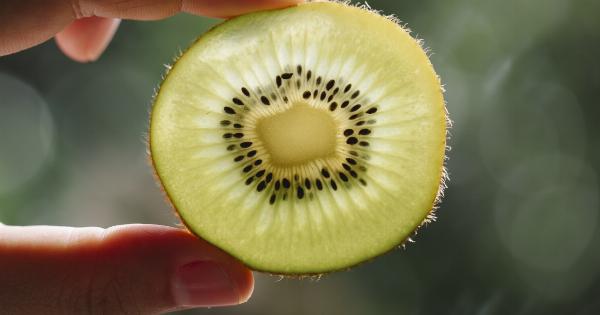Gum, also known as chewing gum, is a popular confectionery product enjoyed by millions of people around the world. It offers a range of benefits, including freshening breath, relieving stress, and satisfying oral fixation.
However, a seemingly harmless act of chewing gum can turn into a dangerous situation if the gum accidentally makes its way into your eye. In this article, we will explore the risks associated with gum in your eye and how to prevent such mishaps.
How Does Gum Get into Your Eye?
Accidents happen, and sometimes gum can unexpectedly end up in your eye. This can occur while blowing a bubble and having it unexpectedly burst, or if you accidentally touch your eye after handling gum.
The sticky nature of gum makes it cling easily to the surface of your eye, causing discomfort and potentially leading to complications.
The Dangers of Gum in Your Eye
While getting gum in your eye may initially seem like a minor inconvenience, it can actually pose several risks to your eye health:.
1. Eye Irritation and Inflammation
When gum makes contact with your eye, it typically causes immediate irritation and inflammation. The eye’s delicate tissues may become red, itchy, or watery, leading to discomfort and temporary vision disturbances.
2. Corneal Abrasion
If gum remains in contact with your eye for an extended period, it can cause a corneal abrasion. The cornea is the clear front surface of the eye, responsible for refracting light.
When damaged, it can lead to pain, sensitivity to light, and a feeling of having something stuck in your eye.
3. Eye Infections
Gum in your eye can introduce bacteria into the delicate ocular environment, potentially causing an eye infection. Symptoms of an eye infection may include redness, swelling, discharge, and increased sensitivity to light.
If left untreated, an eye infection can lead to serious complications and damage to your vision.
4. Damage to Contact Lenses
If you wear contact lenses, gum in your eye can damage or even dislodge them. The sticky nature of gum can adhere to the lens, making it difficult to remove without causing further discomfort or injury.
Additionally, gum residue can accumulate on the lens, leading to reduced clarity and comfort during wear.
5. Loss of Vision
Though rare, severe complications from gum in your eye can lead to a loss of vision. Damage to the cornea or untreated infections can result in permanent vision impairment if not promptly addressed by a healthcare professional.
What to Do If Gum Gets in Your Eye
If you find yourself with gum in your eye, it is important to take immediate action to minimize the risks and discomfort. Follow these steps:.
1. Avoid Rubbing Your Eye
Resist the urge to rub your eye, as this can exacerbate the situation and potentially cause further damage.
2. Flush Your Eye with Water
Gently splash your eye with clean water to dislodge the gum and flush it out. Avoid using soaps or chemicals, as they may further irritate your eye.
3. Blink and Tear
Blink rapidly and encourage your eye to produce tears as this may help in naturally expelling the gum. Tears aid in lubricating the eye and can facilitate the removal of foreign objects.
4. Seek Medical Assistance if Needed
If the gum persists or causes persistent discomfort, it is advisable to seek the help of a healthcare professional. They can provide appropriate treatment, examine your eye for any underlying damage, and ensure your eye remains healthy.
Preventing Gum in Your Eye
Although accidents can occur, there are several precautionary measures you can take to reduce the risk of gum ending up in your eye:.
1. Be Mindful When Chewing Gum
Pay attention while chewing gum, especially when blowing bubbles or engaging in any activities that increase the chances of gum escaping your mouth.
2. Handle Gum with Clean Hands
Prioritize hand hygiene, ensuring your hands are clean before handling gum. This reduces the transfer of any unwanted substances and prevents potential eye infections.
3. Dispose of Gum Properly
After you are done chewing, discard the gum in a trash can or another appropriate receptacle. Avoid flicking gum or sticking it to surfaces where it can become an unexpected hazard.
4. Seek Alternatives
If you frequently find yourself in situations where gum poses a risk to your eyes, consider using alternative stress-relief methods or chewing substitutes like sugarless mints or candies.
In Conclusion
While gum can offer numerous benefits for your oral health and overall well-being, it poses certain risks when it accidentally finds its way into your eye.
The immediate discomfort, potential complications, and threat to eye health make it essential to react promptly and appropriately if gum ends up in your eye. By following preventative measures and knowing how to respond if an accident occurs, you can enjoy chewing gum safely without compromising your eye health.




























